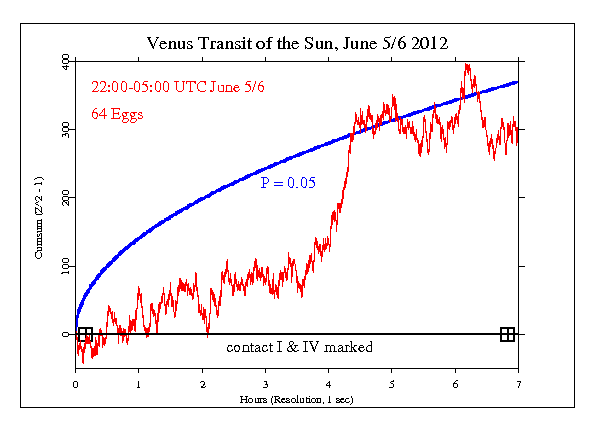Venus Transit June 5/6 2012 |
|
On June 5 and 6 2012, Venus made a rare transit across the face of the Sun for the second time in a decade, and the last time for more than 100 years. The following is from a NASA description:
We decided to take an exploratory look at this, following a suggestion from Brian Josephson, The time period that would seem to be relevant is difficult to specify, and we simply took the period of the transit plus a few minutes at both ends. The figure below is marked to show Contact I and Contact IV. There is a fairly persistent trend during the transit, but the deviation is not significant. We note that since this is an exploratory look, it does not warrant statistical interpretation. Single events are in any case not viable as tests of the general hypothesis of correlation between "global events" and deviations in GCP data. Bearing this out, the results for an exploration of the Venus transit in 2004 showed flat null results.
|
